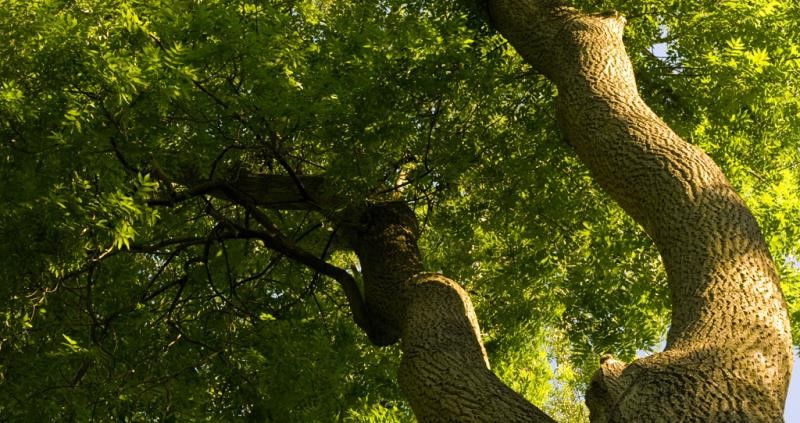Advance stages of infection in the latter will likely lead to a decrease in the amount of foliage within the crown and an increase in a type of regrowth known as epicormics. The timber will become stained and the risk increases of attack by secondary pathogens such as honey fungus (species of the Armillaria genus), which can kill the trees.
Spread has increased rapidly
Ash is a widespread species grown for both its timber and biodiversity value and which makes a substantial contribution to many landscapes. The spread of Ash Dieback has increased rapidly during the summers of 2017 and 2018 especially because conditions have been favourable for the movement of spores. The level of impact is variable across Wales but the disease is now present across the whole of Wales and will have a major impact on the landscape.
The current research indicates that about 5% of ash is likely to be tolerant to Ash Dieback. Ash Dieback can kill saplings and smaller trees but rarely kills larger trees, however, repeated infections kill parts of the tree crowns and weakens those larger trees to such an extent that they become infected by other diseases already present on the site e.g. honey fungus which will eventually kill them.
What to do if your tree(s) becomes affected
If your trees become infected by H. fraxineus then you will need to consider public safety and monitor your trees, particularly in areas with high levels of public access. NRW issues felling licences to fell growing trees, and there is no exemption under the Forestry Act 1967 to fell diseased trees
Exemptions from the need for a felling licence include felling necessary for the prevention of danger or the prevention or abatement of a nuisance. This exemption will only apply if there is a real rather than a perceived danger, or a nuisance as recognised in law. You may be required to provide evidence that the trees presented a danger, for example through an accredited arboriculturalist’s report or photographic evidence. A diseased tree is not necessarily dangerous.
NRW strongly recommend that you contact them if you are considering felling a tree or trees you consider to be dangerous. NRW may be able to give advice that would minimise the danger without any felling. You may be prosecuted for illegal felling if it is shown that the tree or trees did not present a real or immediate danger or they did not present a nuisance as recognised in law.
For further information please contact Natural Resources Wales on 0300 0653000 or enquiries@naturalresourceswales.gov.uk
More information on the Forest Research website here
Ensuring the safety of the public
Landowners have a responsibility to ensure the safety of those on their land and there is particular risk to the public from roadside trees, those adjoining other properties and those along public footpaths. In circumstances where trees on private land pose a risk to public safety on public rights of way, the local authority can require a landowner to remove or prune the trees under Section 154 of the Highways Act 1981.
Anglesey focus
The prevalence of the disease has increased significantly over recent years and repercussions for both the County Council and landowners have the potential to be significant.
Isle of Anglesey County Council’s Ash Dieback Co-ordinator, Jacob Milner attended a recent meeting and outlined the background to the arrival of the disease and showed photographic evidence of how the disease progresses in infecting the trees.
Once 50% of the tree’s crown is affected then it’s recommended that a tree should be made safe. If the level of damage to the tree’s structure is significant, it will become unstable and present a significant health and safety risk.
Landowners' responsibility
Mr Milner explained that landowners have a responsibility to ensure the safety of those on their land and there is particular risk to the public from roadside trees, those adjoining other properties and those along public footpaths. In circumstances where trees on private land pose a risk to public safety on public rights of way, the local authority can require a landowner to remove or prune the trees under Section 154 of the Highways Act 1981.
Members are urged to get in touch with the local council or visit the council website if further clarification is needed on whether their trees are affected.
Mr Milner said: “Ash dieback is a prevalent disease and landowners should get good advice on identifying the disease and the risk a tree may pose from qualified arboricultural consultants. The nature of the disease has significant effects on the structural integrity of the trees and the way they can be felled safely. We would urge the use of professional tree surgeons to advise on the best approach to fell the tree.”

